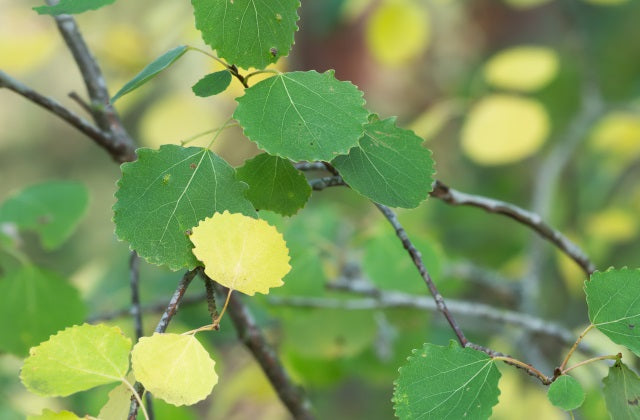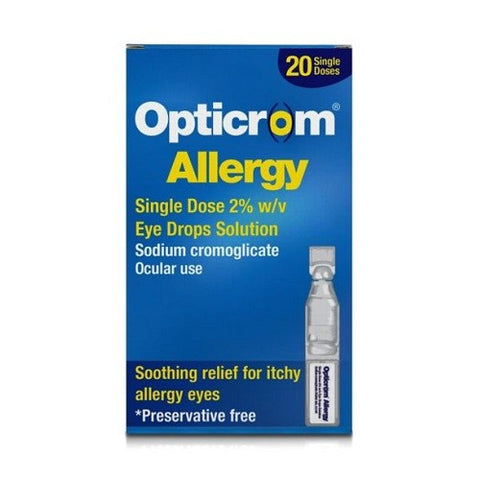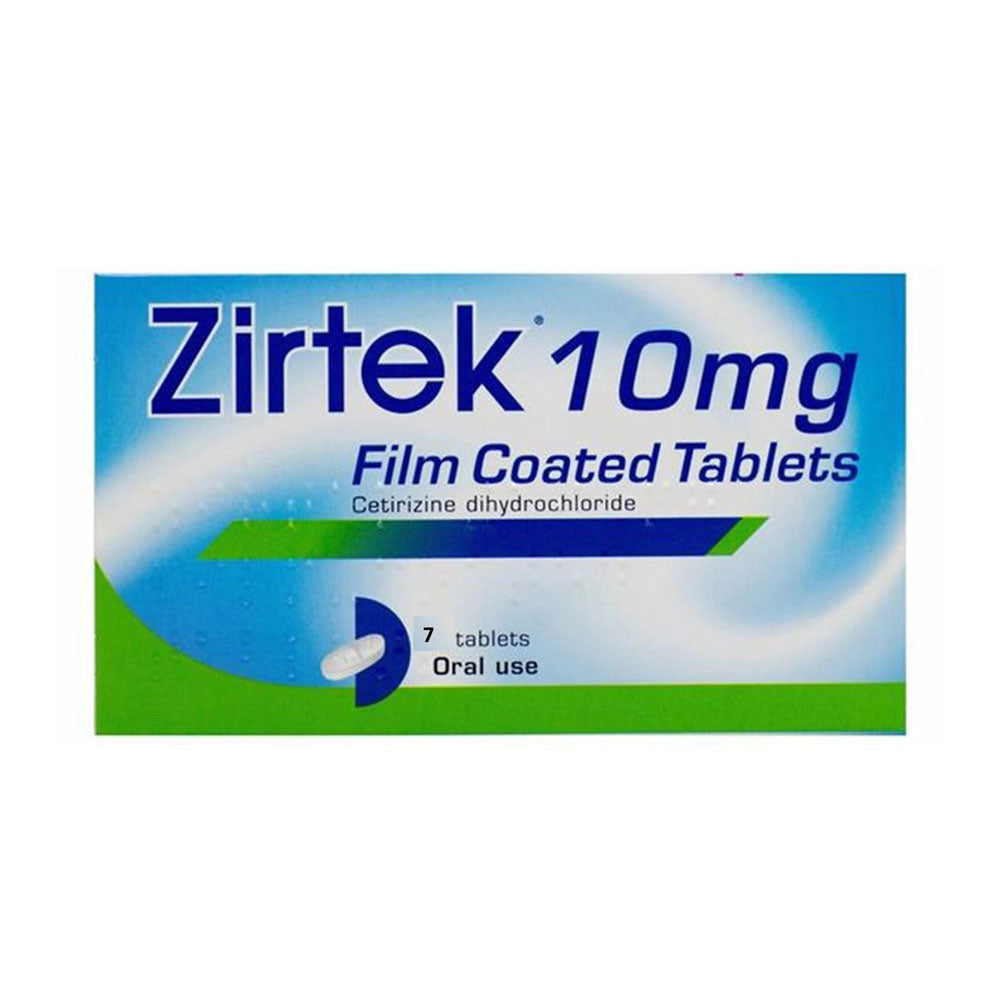Hay fever: pollen release dates and how to relieve your symptoms
Hay fever, also known as allergic rhinitis, affects a lot of the population in one form or another each year. In this guide we:
- explain what hay fever is and what the common symptoms are
- explain what type of pollen causes hay fever at different times of the year, so you know what plants to avoid
- explain different treatment options
- answer some commonly asked questions
What is hay fever?
Hay fever is a type of allergic rhinitis: an inflammation of the inside of the nose caused by certain allergens. First, your body first identifies the allergen as something dangerous then your immune system reacts, resulting in hay fever symptoms.
Allergic rhinitis can be caused by all sorts of allergens. Some of the most common are dust, mites, mould spores, animal saliva or skin and pollen. When it’s caused by pollen, it’s called hay fever.
What are the symptoms of hay fever?
Symptoms of hay fever include:
- sneezing
- runny and blocked nose
- itchy and irritated eyes
- skin rash (if you come into direct contact with the pollen)
A lot of the symptoms are similar to those caused by the common cold; however, a cold won’t cause itchy eyes. If you have itchy eyes, you are probably having an allergic reaction and not suffering from a cold.
Hay fever and pollen: understanding how pollen causes hay fever
There are many different types of pollen and these are released into the air throughout the year— this is why different people can suffer from hay fever at different times of the year. For example, you might be allergic to yew pollen and experience symptoms earlier in the year (normally peaking at the end of February); whereas, someone else may be allergic to grass pollen, and experience symptoms in the summer months.
It’s useful to have an idea of what type of pollen sets you off. You can work this out by taking note of the time of year you experience symptoms then looking to see what pollen is released at that time (see our table below for this information). Checking pollen counts on the days you suffer the most and recording the date will also help you narrow down your particular allergy. You can also visit your pharmacist and ask about having a skin prick test or blood test to identify the exact pollen grains you are allergic too.
Once you know what type of pollen aggravates your hay fever you can take steps to avoid exposure to it. Keep in mind that it is possible to be allergic to several types of pollen.
Pollen counts
Pollen count describes the amount of pollen in the air. Seasonal changes and weather conditions affect how plants release pollen. That’s why you might have very bad hay fever some summers, and less severe symptoms during others. When the pollen count is high, you should take extra precautions against hay fever.
You can access predicted pollen counts for different types of pollen on the Irish Meteorological Service website. The pollen forecast page is updated daily. It gives an overview of the pollen counts for broad types, including:
- tree
- grass
- weed
Dates of pollen release and plant identification
Pollen seasons:
- Tree pollen season – end of February to start of May
- Grass pollen season – end of May to start of July
- Weed pollen season – start of May to start of August
|
Type of plant |
Peak pollen release times |
Source of pollen |
Description |
|---|---|---|---|
|
Tree |
End of February |
Hazel |
 |
|
End of February/start of March |
Yew |
 |
|
|
Start of March |
Elm |
 |
|
|
March |
Alder |
 |
|
|
March |
Willow |
 |
|
|
End of March |
Poplar |
 |
|
|
April |
Ash |
 |
|
|
April |
Birch |
 |
|
|
End of April/start of May |
Oak |
 |
|
|
End of April/start of May |
Plane |
 |
|
|
Start of May |
Pine |
 |
|
|
Weed |
May |
Oil seed rape |
 |
|
Grass |
End of May to start of July |
Grass |
 |
|
Weed |
Start of June |
Plantain |
 |
|
Tree |
June |
Lime |
 |
|
Weed |
End of June |
Dock |
 |
|
End of June to mid-July |
Nettle |
 |
|
|
End of July/start of August |
Mugwort |
 |
|
Peak pollen release times |
Source of pollen |
Description |
|---|---|---|
|
End of February |
Hazel (Tree) |
 |
|
End of February/start of March |
Yew (Tree) |
 |
|
Start of March |
Elm (Tree) |
 |
|
March |
Alder (Tree) |
 |
|
March |
Willow (Tree) |
 |
|
End of March |
Poplar (Tree) |
 |
|
April |
Ash (Tree) |
 |
|
April |
Birch (Tree) |
 |
|
End of April/start of May |
Oak (Tree) |
 |
|
End of April/start of May |
Plane (Tree) |
 |
|
Start of May |
Pine (Tree) |
 |
|
May |
Oil seed rape (Weed) |
 |
|
End of May to start of July |
Grass (Grass) |
 |
|
Start of June |
Plantain (Weed) |
 |
|
June |
Lime (Tree) |
 |
|
End of June |
Dock (Weed) |
 |
|
End of June to mid-July |
Nettle (Weed) |
 |
|
End of July/start of August |
Mugwort (Weed) |
 |
How do you manage symptoms of hay fever?
While some people do ‘grow out’ of hay fever and stop feeling the effects in later life, most people who start to experience symptoms will need to manage them into old age. There is no cure for hay fever as such, but there are things you can do to help lessen your symptoms.
Start by using an over-the-counter hay fever medicine specific to your symptoms. If you find this insufficient, return to your pharmacist for further consultation.
You can also try a number of precautions to reduce the chance of experiencing an allergic reaction:
|
Actions to take |
Situations to avoid |
|---|---|
|
Stay indoors as much as possible, especially when the sun is out or as dusk falls (both times when the pollen count is often high). |
Do not walk or lay down on cut grass. |
|
Prevent the pollen from entering your house by keeping doors and windows closed. |
Do not dry clothes outside, especially in a garden, as they will become covered in pollen. |
|
Clear pollen from clothing by removing items once indoors and placing in washing machine. |
Do not drive with the windows down. |
|
While outside, wear wraparound sunglasses to block pollen from entering your eyes. |
Do not buy fresh flowers and keep them in the home. |
|
Rub a light coating of Vaseline around your nostrils to capture the pollen particles. |
Try not to drink alcohol or smoke as both can exacerbate the symptoms of hay fever. |
Hey fever relief: What’s on offer
There are a number of different over-the-counter medicines that can help relieve symptoms of hay fever. The main types of treatment are:
- hay fever tablets—antihistamines and/or decongestants
- nasal sprays—normally antihistamines or steroids
- eye drops—help soothe itching (antihistamines)
You can also get creams to help with rashes and alternative treatments such as preventative bands.
Hay fever tablets
The two broad types of tablets are:
- antihistamines
- decongestants
Some tablets combine the two.
Antihistamine tablets
Antihistamines work to reduce the amount of histamine in your body. Histamines are the chemicals that your immune system makes to tell your body to get rid of the allergen (hence streaming noses and watery, itchy eyes).
Taking an antihistamine tablet stops the histamines from telling your body to do this and so reduces symptoms.
Antihistamines are best to use before your symptoms appear. Hay fever sufferers will normally take them on a daily basis over a week or a couple of weeks when pollen is high and they are most at risk.
Some antihistamines make you drowsy but many do not.
|
Type |
Image |
Product |
Instructions |
Price |
|---|---|---|---|---|
|
Antihistamine tablets |
 |
Cetrine Allergy 10mg Film-Coated Tablets (30) |
Adults and adolescents aged over 12 years: Take one tablet (10mg) each day. Children aged 6–12 years: Half a tablet (5mg) twice daily. |
|
 |
Clarityn 10mg Tablets (30) |
Adults and children over 12 years of age: Take one tablet once daily. Children aged 2–12 years are dosed by weight: Body weight more than 30 kg: Take one tablet once daily. Body weight 30 kg or less: Do not give Clarityn. |
||
 |
Cetrine Allergy 10mg Tablets (7) |
Adults and adolescents over 12 years of age: One tablet daily. Children 6–12 years: Half a tablet (5mg) twice daily. |
||
 |
Zirtek Allergy Relief Tablets (7) |
Adults and adolescents above 12 years old: One tablet daily. Children between 6 and 12 years old: Half a tablet twice daily. |
||
 |
Zirtek Allergy Relief 10mg Tablets (30) |
Adults and adolescents above 12 years old: One tablet daily. Children between 6 and 12 years old: Half a tablet twice daily. |
|
Product |
Instructions |
Price |
|---|---|---|

Cetrine Allergy 10mg Film-Coated Tablets (30) |
Adults and adolescents aged over 12 years: Take one tablet (10mg) each day. Children aged 6–12 years: Half a tablet (5mg) twice daily. |
|

|
Adults and children over 12 years of age: Take one tablet once daily. Children aged 2–12 years are dosed by weight: Body weight more than 30 kg: Take one tablet once daily. Body weight 30 kg or less: Do not give Clarityn. |
|
 |
Adults and adolescents over 12 years of age: One tablet daily. Children 6–12 years: Half a tablet (5mg) twice daily. |
|
|
|
Adults and adolescents above 12 years old: One tablet daily. Children between 6 and 12 years old: Half a tablet twice daily. |
|

Zirtek Allergy Relief 10mg Tablets (30) |
Adults and adolescents above 12 years old: One tablet daily. Children between 6 and 12 years old: Half a tablet twice daily. |
Decongestant tablets
Decongestant tablets target and reduce the fluid in your nose. This means they work to reduce symptoms once they have appeared. When you have a blocked nose, it can be caused by the swelling of blood vessels. Decongestants reduce the swelling of blood vessels in your nose, which will open up the airways.
Decongestants are the best option when relieving existing symptoms.
|
Type |
Image |
Product |
Instructions |
Price |
|---|---|---|---|---|
|
Decongestant tablets |
 |
Zirtek Plus Decongestant 5mg/120mg Prolonged Release Tablets (6) |
Adults and children over 12 years of age: Take one tablet twice daily (one in the morning and one in the evening). |
|
Product |
Instructions |
Price |
|---|---|---|
 Zirtek Plus Decongestant 5mg/120mg Prolonged Release Tablets (6) |
Adults and children over 12 years of age: Take one tablet twice daily (one in the morning and one in the evening). |
Non-drowsy hay fever tablets
Non-drowsy hay fever tablets are widely available. Some of them are:
Hay fever eye drops
Eye drops are best used in conjunction with tablets, or when you are most bothered by itchy eyes but less concerned about other symptoms. Eye drops can usually be reapplied multiple times throughout the day, but make sure you read the dosage instructions that come with your product.
A great tip for applying eye drops is to drop them in slowly. Your eye can only absorb one drop at a time, so if your product says apply four drops, space out the drops or else your eye won’t be able to absorb them and they will simply run down your face.
|
Type |
Image |
Product |
Instructions |
Price |
|---|---|---|---|---|
|
Eye drops |
 |
Opticrom Allergy Single Dose 2% Eye Drops (20 single-dose vials) |
Adults and children: Apply one or two drops into each eye up to four times daily, or as directed by your doctor or pharmacist. |
|
 |
Optrex Soothing Eye Drops for Itchy Eyes (10ml) |
2 to 4 drops into each eye to instantly refresh them. |
|
Product |
Instructions |
Price |
|---|---|---|
 
Opticrom Allergy Single Dose 2% Eye Drops (20 single-dose vials) |
Adults and children: Apply one or two drops into each eye up to four times daily, or as directed by your doctor or pharmacist. |
|
 
Optrex Soothing Eye Drops for Itchy Eyes (10ml) |
2 to 4 drops into each eye to instantly refresh them. |
Hay fever nasal sprays
Nasal sprays help prevent the symptoms of hay fever developing. You can get both antihistamine and steroid sprays, as well as sprays that do not include antihistamines or steroids, meaning there is less risk of side-effects.
|
Type |
Image |
Product |
Instructions |
Price |
|---|---|---|---|---|
|
Hay fever nasal sprays |
 |
Nasacort Non-Drowsy Allergy Nasal Spray (55mcg) Ages 18+ |
Two sprays in each nostril once daily |
|
 |
Otrivine Decongestant Adult 0.1% Nasal Spray (10ml) |
For adults and children over 12 years: One to two sprays into each nostril, three times daily. |
||
 |
Flixonase Allergy Relief Nasal Spray 0.05% (60 sprays) |
Adults 18 years and over: Two sprays in each nostril once a day. |
€15.00 |
|
 |
Beconase Hayfever Nasal Spray (100 sprays) Ages 18+ |
Two sprays into each nostril every morning and evening. |
|
Product |
Instructions |
Price |
|---|---|---|
 
Nasacort Non-Drowsy Allergy Nasal Spray (55mcg) Ages 18+ |
Two sprays in each nostril once daily |
|
 
Otrivine Decongestant Adult 0.1% Nasal Spray (10ml) |
For adults and children over 12 years: One to two sprays into each nostril, three times daily. |
|
 
Flixonase Allergy Relief Nasal Spray 0.05% (60 sprays) |
Adults 18 years and over: Two sprays in each nostril once a day. |
€15.00 |
 
Beconase Hayfever Nasal Spray (100 sprays) Ages 18+ |
Two sprays into each nostril every morning and evening. |
Creams and bands
In some instances, if your skin comes into direct contact with pollen you can develop hives. Use a soothing cream like Eurax to relieve the itching and help the hives settle.
You can also try alternative remedies like a prevention band. Some customers prefer this option because it is medicine free and doesn’t have any side effects. It can also be used by children as well as adults. The band can be worn to prevent symptoms from developing or be put on once symptoms have started.
|
Type |
Image |
Product |
Instructions |
Price |
|---|---|---|---|---|
|
Soothing cream |
 |
Eurax Cream 10% w/w Crotamiton (30g) |
Apply to the affected area two to three times daily. Irritation will be relieved for 6 to 10 hours. |
|
|
Prevention band |
 |
Hay Band Hay Fever Prevention |
1. Place the Hay Band over the arm, with the button over the outer elbow. 2. Ensure that one strap is above the elbow and the other is below the elbow. 3. Bend the elbow to ensure that the button is pressing on the outer end of the elbow crease. 4. Adjust the band to ensure a comfortable wearing position. |
|
Product |
Instructions |
Price |
|---|---|---|
 
Eurax Cream 10% w/w Crotamiton (30g) |
Apply to the affected area two to three times daily. Irritation will be relieved for 6 to 10 hours. |
|
 
Hay Band Hay Fever Prevention |
1. Place the Hay Band over the arm, with the button over the outer elbow. 2. Ensure that one strap is above the elbow and the other is below the elbow. 3. Bend the elbow to ensure that the button is pressing on the outer end of the elbow crease. 4. Adjust the band to ensure a comfortable wearing position. |
Dealing with severe or persistent hay fever
If your hay fever is severe and your symptoms are interfering with your sleep and day-to-day activities to a significant extent, it is recommended you visit your pharmacist. Likewise, if you suffer from hay fever all year round, known as perennial rhinitis, you should speak to your doctor about it.
A medical professional will be able to undertake tests to establish the exact cause of your allergy and offer stronger prescription medication to help relieve your symptoms.
There are two tests available, a skin prick test and a blood test.
Skin prick test
If you suffer from severe or long-term hay fever, your pharmacist will be able to refer you for a skin prick test. Different types of pollen will be placed on your skin and your skin will then be pricked, exposing mast cells (your skin’s immune system) to the pollen. If you have a reaction then this indicates you allergic to that type of pollen.
Blood test
Some patients are more suited to blood tests. A blood test is a simple procedure—blood will be extracted using a syringe and then sent for testing to establish what allergens are causing your reaction.
Why is hay fever often worse at night?
There are a number of reasons why you might experience symptoms of hay fever in the evening that are as severe, ore more severe, than during the day.
- Airborne pollen settling back to ground level: During the day, the small size of pollen particles means that they rise up with the hot daytime air as it warms. When the air cools in the evening, much of the pollen floating in the sky settles back down to the ground.
- Drinking and smoking in the evening: Alcohol carries histamines—a chemical that causes the body to produce symptoms of hay fever such as itching and sneezing. Alcohol and nicotine also react with hay fever medicine and prevent it from working. Smoking can irritate the physical effects of hay fever, such as a sore throat and general congestion.
- Pollen in the home: Throughout the day, pollen is brought into the home, either on clothing, the fur of pets and simply through cracks and open windows. This pollen can then become trapped overnight, meaning those with hay fever breathe it in while asleep and suffer its effects.
Can hay fever cause tinnitus?
In some instances, hay fever can cause tinnitus. Hay fever produces inflammation in the nose and throat and excess mucous. This can affect the pressure in the middle ear, causing a blocked sensation and impaired hearing.
Can hay fever give you a sore throat?
Hay fever itself does not directly cause a sore throat. However, constant sneezing can create soreness in the throat.
Hay fever can also make an asthmatic’s throat itch. Many sufferers ‘scratch’ this itch by creating a clicking or glugging sound in their throat. However, too much of this can also make the throat feel sore and tender.
Does hay fever affect asthma?
Yes. Pollen can trigger an asthma attack in those that suffer from hay fever. Hay fever and asthma have a close relationship, with over half of all people suffering from hay fever, also suffer from Asthma.
Hay fever can make an asthmatic’s sensitive airways more likely to react to other triggers such as dust or pollution. It can cause your inflamed airways to swell up even further, which will cause an asthma attack.
You can help reduce your asthma attack risk by:
1. Take your preventer/reliever inhalers when prescribed
Your preventer inhaler will help reduce sensitivity and welling in your airwaves. This will help lower the risk of attacks. Make sure you take consistently for best results.
Your reliever inhaler (often the blue coloured one) should be with you every day, especially during hay fever season. This will help relieve symptoms if an attack is about to start.
 product page.
product page.
What can I take for hay fever when pregnant?
If pregnant, always consult with a pharmacist before taking medicine for hay fever, even if it is one you have taken regularly in the past.
Almost all hay fever pills are made using antihistamines. However, not all types of antihistamine are suitable for pregnant women. Some antihistamines have more safety information around use when pregnant than others. Some antihistamines can also cause drowsiness, which is not always appropriate when pregnant.
Always check with your pharmacist before taking an antihistamine while pregnant.
Saline (salt water) sprays can also be used to clear out the nose. However, you should always check with a pharmacist before use when pregnant.


 Zirtek Allergy Relief Tablets (7)
Zirtek Allergy Relief Tablets (7)